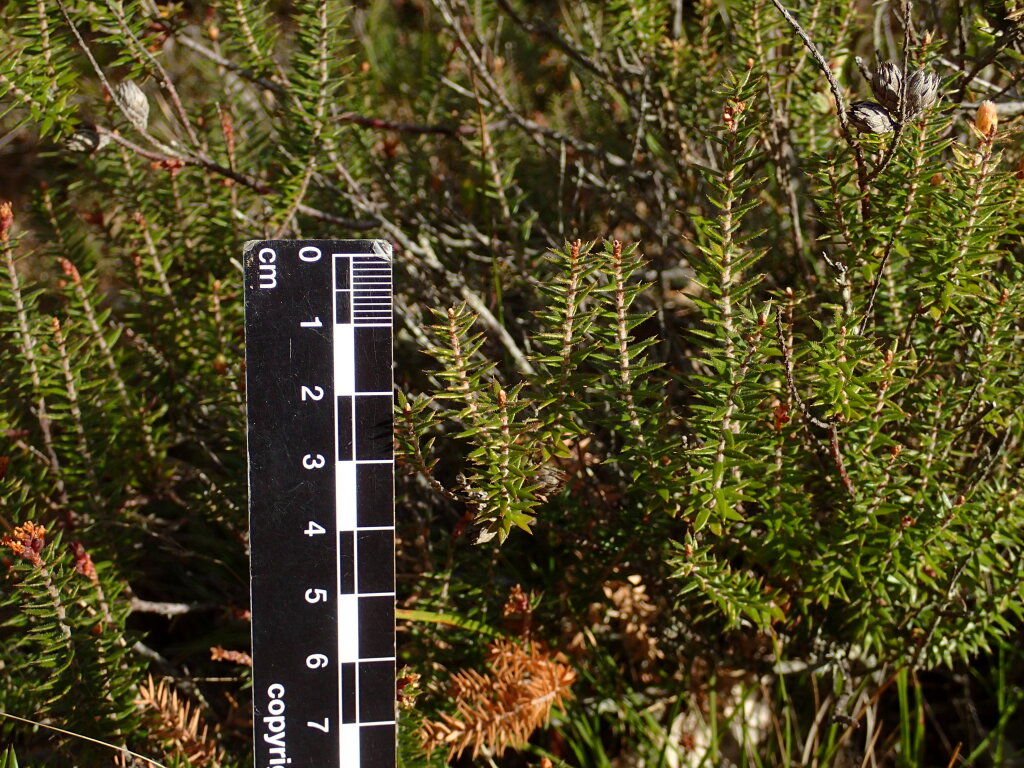Acrotriche serrulata
(Labill.) R.Br. Honey-potsDense, prostrate to decumbent shrub to c. 30(–60) cm high; branchlets finely pubescent. Leaves suberect to reflexed, linear-lanceolate to lanceolate, 3.5–11 mm long, 0.5–1.7(–2.5) mm wide, mucronate, flat, sparsely pubescent to pilose on both surfaces (at least when young), rarely almost glabrous, lower surface with 3–5(–7) unbranched subparallel veins separated by shallow glaucous grooves; margins plane to slightly recurved, scabrous to pilose. Flowers in 5–12-flowered spikes on old wood (often below leafy region); spike c. 2–8 mm long; bracteoles and sepals often with minute appressed hairs; bracteoles 1–1.7 mm long; sepals 1.7–2.8 mm long; corolla sometimes maroon-tinged; tube transluscent, (2.2–)4–5.5(–6)mm long; lobes green, 1.5–2.5 mm long; ovary 5–7-locular, densely and minutely white-papillose, style (1–)1.4–2 mm long. Fruit depressed-globose, flat-topped, 2.5–3.5 mm long, greyish-green, indumentum persisting. Flowers mainly Jun.–Nov.
LoM, MuM, Wim, GleP, Brid, VVP, VRiv, GipP, OtP, WaP, Gold, CVU, GGr, DunT, NIS, EGL, EGU, WPro, HSF, HNF, OtR, Strz, MonT, HFE, VAlp. Also SA, NSW, Tas. Widely distributed, occurring on sandy, loamy or skeletal soil in woodland, open-forest, heathland, coastal scrub and mallee shrubland.
This species resprouts after burning, the new leaves sometimes broader than those of mature specimens. Plants in the Little Desert-southern Big Desert area have short broad leaves that are sometimes almost glabrous. They resemble A. affinis but have venation typical of A. serrulata.
Albrecht, D.E. (1996). Epacridaceae. In: Walsh, N.G.; Entwisle, T.J., Flora of Victoria Vol. 3, Dicotyledons Winteraceae to Myrtaceae, pp. 464–509. Inkata Press, Melbourne.
 Spinning
Spinning

